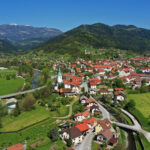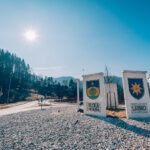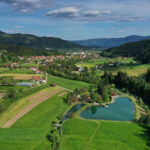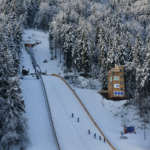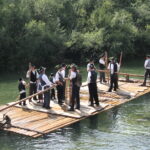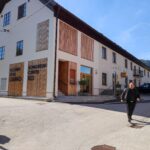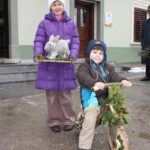Ljubno, Slovenia
Ljubno, a municipality made up of nine villages, is located in the historical region of Štajerska in Slovenia. It is located 14 kilometers from the district capital of Mozirje and 28 kilometers from the metropolitan center of Velenje. A total of 2,685 people live in the municipality, of which around 1,155 live in the main town of Ljubno, which lies at the confluence of the Ljubnica and Savinja rivers and nestles in the Savinjsk Alps. Due to its geographical location, timber trade and timber rafting historically played an important role in the community, and it has been a center for timber trade for five centuries. The history of rafting is clearly documented in the Museum of Timber Rafting, established in 2001, and is an essential element of the community’s cultural heritage. The picturesque river landscapes are also an important identification factor in the region: nature conservation and fishing are very important in Ljubno, and they are successfully combined with gentle tourism.
The village of Ljubno was badly affected by the torrential floods of the Savinja River in the 1990s. With the renovation and environmentally friendly planning of flood protection and corresponding architectural installation of connecting structures, which also led to better accessibility, the municipality is a positive example for areas with similar spatial development constraints and obstacles.
The municipality is also characterized by its range of sporting activities. Among other things, Ljubno is a pioneer in women’s ski jumping. In 1931 the first ski jumping events for women took place there. Over the decades, several ski jumping hills were built and since 2006 international ski jumping competitions have been held regularly.
An important value system of the municipality of Ljubno is to rely on the principles of the “smart village” and on sustainable development. The community takes care to maintain the balance between tradition and modernity as well as between global and local activities. The skillful cooperation with different companies generates mutual benefits, especially in agriculture, tourism and industry. Through cooperative action, the community was able to become a location for both nationally and internationally successful industrial companies, which are among the main employers in the region and occasionally also act as financial supporters of community projects. Joint investments are also made in the education system: a much-noticed, unique school experiment was started as part of a test class, in which young people are prepared for the working world in a playful manner. The students can immerse themselves in a wide variety of professional worlds, from electronics to agriculture, and explore their interests. Financial support also enables students to gain experiences as part of international exchange programs.
In Ljubno, great importance is attached to the preservation of cultural heritage and customs. This can be seen in the example of the traditional binding of palm bushes, which is constantly being developed, reinterpreted and displayed in the museum. Efforts are being made on the part of the municipality to have this unique cultural asset included in the UNESCO World Heritage List. A principle of the municipality is to draw a line between modernity and tradition. This can also be seen, for example, in the further development of organic farming and the creation of links between agriculture, gastronomy and tourism. The culinary traditions of the region are also taken into account, which is reflected in the wide range of restaurants available in the region. Attention is also paid to the preservation of the architectural heritage. Renovations focus on sustainability and ecology. New uses were found for former farm buildings and barns typical of the region, which will ensure their preservation. But new projects were also made possible, for example the construction of the community center, the open-air museum of folk architecture and the creation of a hiking trail on the bank of the Savinja River.
Particularly noteworthy is the sustainable approach to the preservation of nature and natural resources, which is reflected, among other things, in the establishment of environmentally conscious tourism with high added value. Responsible use of natural resources is obviously important to the municipality of Ljubno. Half of the forests in the municipality serve to preserve biological diversity and 27 percent of the forest area is classified as a Natura 2000 area. The association that issues fishing licenses for the Savinja River applies strict eligibility criteria following the principles of river and fish protection. Environmental protection is more important than economic profit. In general, the Savinja River, with the tradition of timber rafting, rafting and fishing, forms an important link between social and cultural life. The nature conservation measures are reflected in the receipt of the “Slovenia Green Destination Bronze” label, with which the community positioned itself as an environmentally friendly and business-friendly destination, nationally and internationally.
Great attention is paid to the needs of the local economy, which is reflected in the spatial planning, but also in joint investments by the municipality and the economy in the common good. Long-term cooperation is also maintained with neighboring communities. Over the years, several successful joint projects have been implemented, such as the expansion of the regional infrastructure, a joint tourism strategy, medical care, the organization of public transport with the participation of volunteers, and joint resource and water protection.
Ljubno is an excellent example of a functional symbiosis between man and nature. Based on the diverse projects that have been implemented in recent years, it becomes evident that responsible nature conservation, cooperation between business and the local population and not only the preservation but also the development of traditions are possible. The municipality showcases what is achievable if you carefully rely on your strengths and specifically involve the committed village community. In many ways this can serve as a role model for many other communities.
Evaluated: 2022

